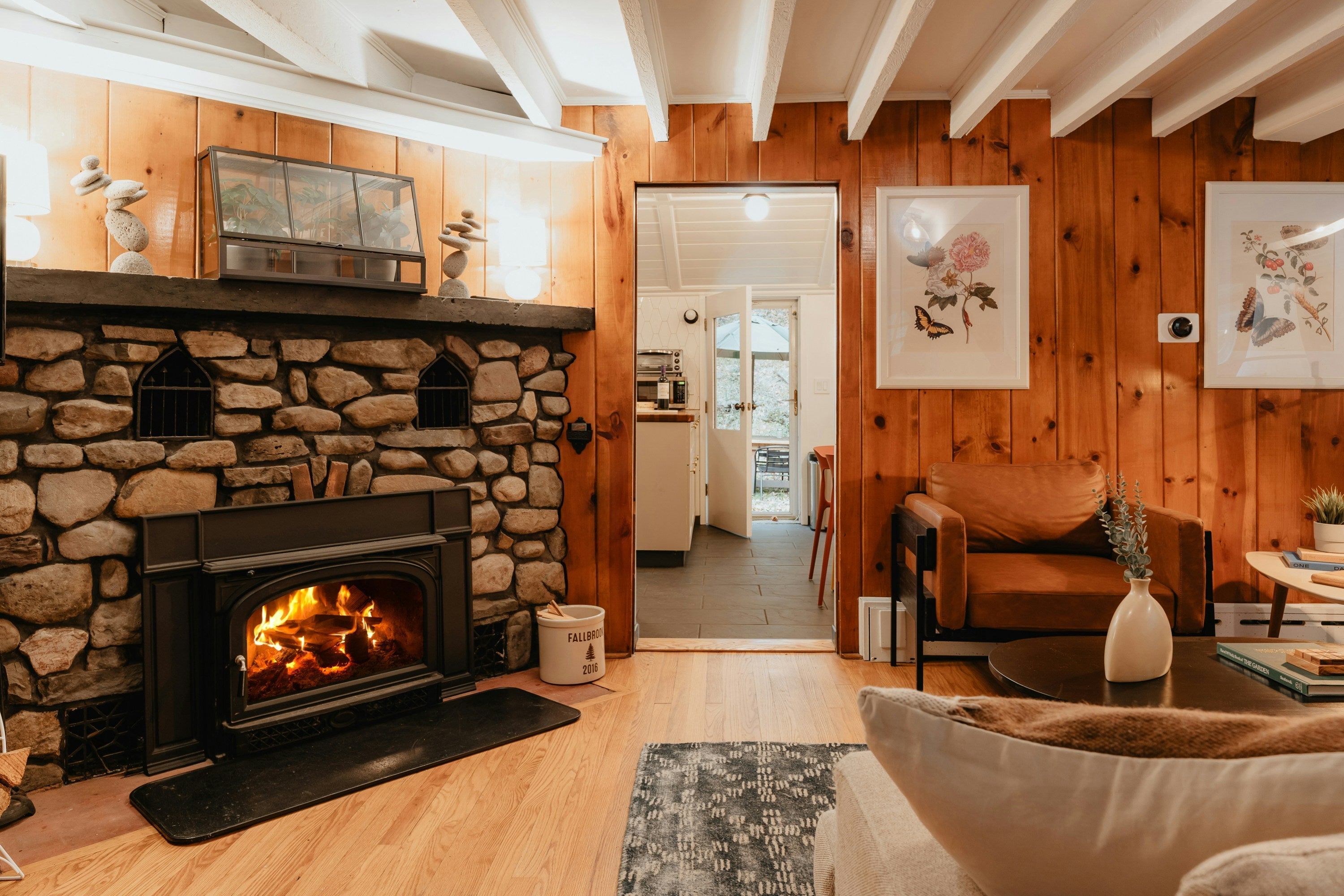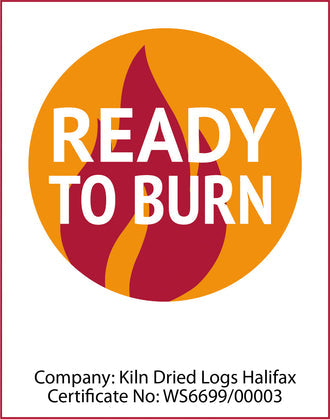
How to Use a Log Burner: From First Flame to Cozy Glow
How to Use a Log Burner: From First Flame to Cozy Glow
Log burners have become increasingly popular as an efficient and environmentally conscious heating solution for modern homes. Whether you're considering installing your first wood-burning stove or looking to optimise your existing setup, understanding how to use a log burner properly is essential for maximising heat output, ensuring safety, and getting the most value from your fuel. This comprehensive guide covers everything from initial operation to advanced techniques, helping you master the art of efficient log burning while maintaining optimal performance throughout the heating season.

Getting Started: How to Use a Log Burner for the First Time
When using a log burner for the first time, preparation and understanding your appliance are crucial for success. Before lighting your first fire, familiarise yourself with your stove's components, including the firebox, air vents, flue damper, and door mechanisms. Modern log burners typically feature primary and secondary air controls that work together to regulate combustion and maximise efficiency.
Begin by ensuring your chimney or flue system is clear and functioning properly. A professional chimney sweep should inspect and clean the system before your first use, particularly if the stove is newly installed or hasn't been used for an extended period. Check that your carbon monoxide detector is working and positioned appropriately near the appliance.
For your inaugural fire, start with a small amount of fuel to allow both you and the stove to become accustomed to the burning process. Use dry kindling and quality firelighters rather than attempting to burn large logs immediately. This approach helps you understand how your specific model responds to air control adjustments and fuel loading patterns.
The break-in period for a new log burner typically involves several small fires over the first week of use. This process allows any manufacturing residues to burn off safely and helps the stove's components settle into their optimal operating positions. During this phase, expect some initial odours and possibly minor smoke production as protective coatings cure.

How to Light a Log Burner Safely and Effectively
Lighting a log burner properly sets the foundation for efficient, clean burning throughout your fire's duration. The top-down method has gained recognition as the most effective lighting technique, producing less smoke and establishing better combustion conditions from the outset.
Begin by opening all air vents fully to ensure maximum airflow during the lighting process. Place your largest logs at the bottom of the firebox, creating a stable base layer. Add progressively smaller pieces, finishing with fine kindling at the top. This arrangement allows the fire to burn downward through the fuel layers, creating optimal burning conditions.
Position two or three quality firelighters among the kindling at the top of your fuel stack. Premium firelighters ignite quickly and burn long enough to establish the fire effectively. Light the firelighters and immediately close the stove door, allowing the controlled airflow through the vents to feed the flames.
Monitor the fire's development through the glass door during the first fifteen minutes. As the kindling catches and begins burning down to the larger wood pieces, you'll notice the flames becoming more established and the chimney drawing more effectively. This is when proper combustion begins, and you can start adjusting the air controls for optimal performance.
Avoid opening the door unnecessarily during the lighting phase, as this disrupts the airflow patterns essential for efficient combustion. Once the fire is well-established with good flame activity throughout the fuel load, you can begin adjusting the air controls according to your heating requirements and the burning characteristics you observe.
Understanding Your Log Burner's Vents and Controls
Mastering how to use the vents on a log burner is fundamental to achieving efficient, clean combustion and maximising heat output from your fuel. Most modern log burners feature both primary and secondary air controls, each serving distinct functions in the combustion process.
Primary air controls regulate the airflow beneath the fuel bed, providing oxygen essential for initial ignition and maintaining basic combustion. When lighting your fire, keep primary air controls fully open to establish strong flames and heat the chimney effectively. As your fire develops, gradually reduce primary air to prevent rapid fuel consumption while maintaining adequate combustion air.
Secondary air controls supply preheated air above the fuel bed, promoting complete combustion of gases released during the burning process. This secondary combustion significantly improves efficiency and reduces emissions, making it a crucial component of clean burning. Secondary air should remain partially open throughout most of the burning cycle, only being reduced during extended burning periods with well-established coal beds.
The interaction between primary and secondary air controls requires attention and adjustment based on your fire's stage and the type of fuel being burned. During the initial lighting phase, both controls should be fully open. As flames establish and the stove reaches operating temperature, begin closing primary air while maintaining secondary air flow for clean combustion.
Understanding your specific stove's air control characteristics takes practice and observation. Different models respond differently to control adjustments, and factors such as outside weather conditions, chimney draft, and fuel moisture content all influence optimal settings. Keep detailed notes during your first months of operation to develop familiarity with your stove's preferences under various conditions.
How to Use a Log Burner Efficiently
Achieving maximum efficiency from your log burner involves understanding fuel selection, loading techniques, and air control management. Efficient operation not only reduces fuel consumption but also minimises emissions and maximises heat output, making your heating system more economical and environmentally responsible.
Fuel quality forms the foundation of efficient burning. Kiln-dried logs with moisture content below 20% provide optimal performance, igniting easily and burning cleanly with minimal smoke production. Hardwood varieties such as oak, ash, beech, and birch offer excellent heat output and longer burning times, making them ideal for sustained heating periods. These premium hardwoods burn at higher temperatures and produce substantial coal beds that provide consistent heat output over extended periods.
Loading technique significantly impacts efficiency and burning duration. Rather than filling the firebox completely, load logs to approximately two-thirds capacity, ensuring adequate space for air circulation and flame development. Arrange logs with gaps between them to promote airflow, but avoid spacing them too widely, which can lead to rapid burning and heat loss.
The timing of reload cycles affects overall efficiency. Add fresh logs when existing fuel has burned down to a substantial coal bed but flames are still present. This approach maintains continuous combustion without requiring relighting, preserving the stove's operating temperature and chimney draw. Opening the door briefly before reloading allows any accumulated gases to burn off safely.
Temperature management through air control adjustment optimises fuel consumption while maintaining comfortable heating levels. Once your fire is well-established, reduce air controls gradually to extend burning time without compromising combustion quality. Monitor flame patterns and adjust controls based on visual feedback, aiming for steady flames with minimal smoke production.
Multi-Fuel Options: Using Coal and Other Fuels
Many log burners are designed as multi-fuel appliances, capable of burning various fuel types beyond traditional logs. Understanding how to use a multi fuel log burner effectively expands your heating options and can provide economic advantages depending on fuel availability and pricing in your area.
Coal
When considering how to use coal on a log burner, ensure your appliance is specifically rated for multi-fuel operation. Coal burning requires different air management compared to wood, typically needing more primary air for sustained combustion and different grate arrangements to support the fuel bed effectively.

Anthracite coal offers excellent heat output and long burning times, making it suitable for overnight heating or extended periods when consistent warmth is required. Begin by establishing a good wood fire using standard lighting techniques, then add small amounts of coal gradually once the firebox is thoroughly heated. This approach prevents thermal shock and ensures proper coal ignition.
Coal requires a more robust air supply than wood, particularly through primary air controls. Maintain higher primary air settings when burning coal, and expect different flame characteristics compared to wood burning. Coal produces a more compact, intense flame and generates substantial heat that may require adjusting your room heating expectations.
Mixed fuel burning combines the benefits of both wood and coal, starting with wood for easy ignition and adding coal for extended burning periods. This approach provides flexibility in fuel management and can optimise heating costs depending on fuel prices and availability. Always add coal to an established wood fire rather than attempting to light coal directly.
Alternative fuels such as compressed logs or eco-briquettes can supplement traditional wood supplies. These manufactured fuels often provide consistent burning characteristics and can be particularly useful during periods when quality logs are difficult to source. Follow manufacturer recommendations for any alternative fuels, and ensure they are appropriate for your specific stove model.
Proper Storage and Fuel Preparation
Maintaining optimal fuel condition requires attention to storage methods and preparation techniques. Well-stored logs maintain their low moisture content and burning efficiency, while poor storage can compromise fuel quality and reduce heating performance.
Outdoor storage requires protection from rain and snow while allowing adequate airflow around the fuel stack. Consider investing in a quality log store to protect your investment in premium fuel. Storing logs in your garage can provide additional protection during harsh weather conditions, though proper ventilation remains essential.
Understanding moisture content requirements helps you select appropriate fuel and maintain optimal burning conditions. Quality kiln-dried logs should measure below 20% moisture content when tested with a digital moisture meter.
Essential Safety and Maintenance Tips
Safe log burner operation requires attention to proper procedures, regular maintenance, and awareness of potential hazards. Establishing good safety habits from the beginning ensures years of reliable, worry-free heating while protecting your home and family from fire-related risks.
Regular maintenance begins with daily fire management practices. Always ensure fires are completely extinguished before leaving home or retiring for the night. Use a torch to check for any remaining embers in the firebox, and never assume a fire has died out completely based solely on visual inspection. Establish a routine of ash removal, cleaning the glass door, and checking air control operation.
Weekly maintenance should include inspecting the stove's exterior for any signs of damage, loose components, or unusual wear patterns. Check that door seals remain intact and that the door closes securely with proper compression. Examine the flue pipe connections visible outside the appliance for any signs of corrosion or damage that might affect safe operation.
Monthly tasks include thorough chimney and flue inspection, particularly during heavy use periods. Look for any blockages, damage to the chimney pot or cowl, and signs of birds or other animals attempting to nest in the system. Professional chimney cleaning should occur at least annually, with more frequent service during heavy use periods.
Emergency procedures should be clearly understood by all household members. Keep appropriate fire extinguishing equipment nearby, including water, sand, or specialised fire blankets suitable for wood-burning appliances. Never use water on an active fire within the stove, but have water available for cooling ashes or dealing with external fire situations.
Carbon monoxide awareness remains critical for safe operation. Ensure detectors are properly positioned and tested regularly. Understand the symptoms of carbon monoxide exposure and establish clear procedures if detection alarms sound. Poor burning conditions, unusual smoke patterns, or difficulty maintaining combustion may indicate ventilation problems requiring immediate attention.
Conclusion
Mastering log burner operation combines technical knowledge, practical experience, and consistent attention to safety procedures. By understanding your appliance's characteristics, using quality fuel, and maintaining proper operating procedures, you'll achieve efficient, safe heating that enhances your home's comfort throughout the heating season. Regular practice and attention to detail will develop your skills and confidence, ensuring optimal performance from your investment in wood-burning heating technology.
Share
